Recent Articles
Popular Makes
Body Types
2024 Lincoln Nautilus Road Test and Review
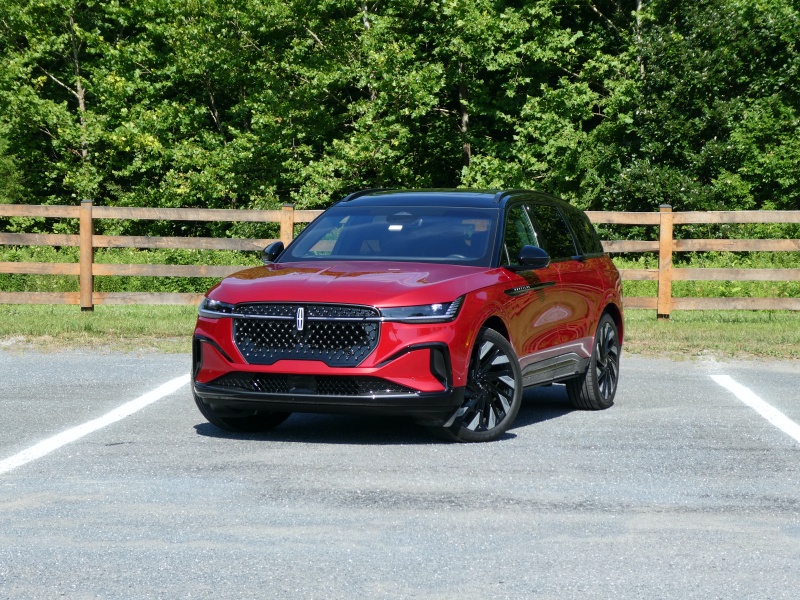
2024 Lincoln Nautilus Reserve III ・ Photo by Brady Holt
Sometimes, it feels like Europe has defined the modern luxury car with requirements for speed, sporty handling, and technological complexity. In recent years, Lincoln has responded with its own philosophy of “quiet flight.” That means smooth, relaxing comfort and elegant yet restrained styling for a different sort of high-end experience.
Lincoln takes that up a notch with its latest new model, the redesigned 2024 Lincoln Nautilus two-row mid-size crossover SUV. We were big fans of the last-generation Nautilus, particularly after Lincoln overhauled its interior back in 2021. The new model, priced from $50,415, provides crisper styling, a modern yet distinctive interior, and a newly optional fuel-saving hybrid powertrain. For this review, we just spent a week testing the Nautilus Hybrid to see how it fits into the luxury SUV market. Keep reading as we explore the new Nautilus’s pros and cons to see if it’s the right high-end crossover for you.
Minimalist Design
The 2024 Nautilus isn’t a chrome-crusted traditional luxury car or an aggressively sporty-looking SUV. Instead, Lincoln focused on a minimalist design with eye-catching details.
With its blacked-out roof pillars and its door handles that hide alongside the bottoms of the windows, the Nautilus has the smoothness of a concept car. And on upper models, like our Reserve III test vehicle, a slim lightbar connects the headlights and gradually switches on when you approach or unlock the vehicle. Aside from our test vehicle’s massive and flashy 22-inch wheels (19-inchers are standard), the Nautilus doesn’t scream “I cost a lot” at a glance, yet it shows great attention to detail if you look closer. And with more crisply tailored lines than last year’s rounded Nautilus, it’s a more striking SUV when you notice it.
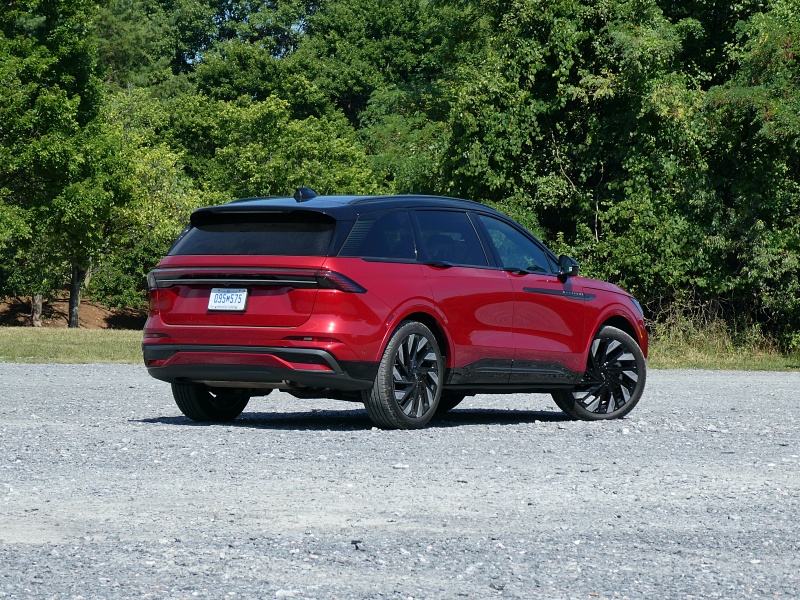
2024 Lincoln Nautilus Reserve III ・ Photo by Brady Holt
The Big-Screen Experience
The headline-grabbing change to the new Nautilus is its 48-inch screen that spans the full width of the vehicle along the top of the dashboard. It lets you put a customizable variety of information right in your line of sight at the base of the windshield, and it lets you see everything side by side without needing to switch views. Complementing a locked-in speedometer and navigation map, options for the remaining three slots include radio or media information, one of two trip computers, a weather forecast, or a large clock. Lincoln also provides a conventional 11.1-inch touchscreen within the driver’s reach; you use it to customize the big screen, change vehicle settings, or show yet another display – including cellphone apps via Apple CarPlay or Android Auto.
The result isn’t the overwhelming screens-in-your-face experience that we feared. Lincoln keeps the system relatively easy to use, and since you can see so much at the same time, it becomes “set it and forget it.” Plus, physical controls remain for many common functions. Last year’s Nautilus had even simpler controls and a single 13.2-inch screen; it remains one of our favorite luxury SUV interiors. But the new Nautilus doesn’t have to be as scary to the technophobe as the words “48-inch screen” might suggest.
Our chief objections are that the unlabeled steering-wheel controls take too much attention to figure out, and that the 11.1-inch screen looks plain on its default homepage. It looks like an ordinary car’s solo screen, rather than serving its main role of complementing the jumbo display.
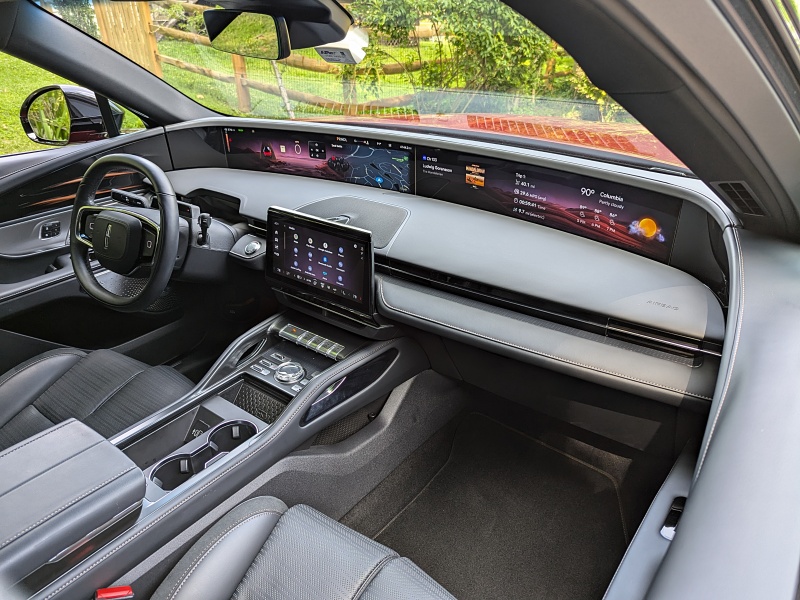
2024 Lincoln Nautilus Reserve III ・ Photo by Brady Holt
Comfortable Seating for Five
Move beyond the Nautilus’s screen and you’ll find a sumptuously finished cabin with room for five adults to stretch out comfortably.
The front seats are well-shaped and comfortable, and upper models include Lincoln’s 24-way “Perfect Position” adjustability along with a massage function. Heating and ventilation for the front seats come standard, as does a heated steering wheel. The backseat also continues to be a standout, providing stretch-out space that’s far more than you’ll find in most mid-size SUVs. There isn’t a third-row seat, but that’s likely key to the Nautilus’s success. Since Lincoln didn’t have to worry about folks in the far back, it provided VIP treatment for the second row. It’s roomier and more comfortable than Lincoln’s larger Aviator.
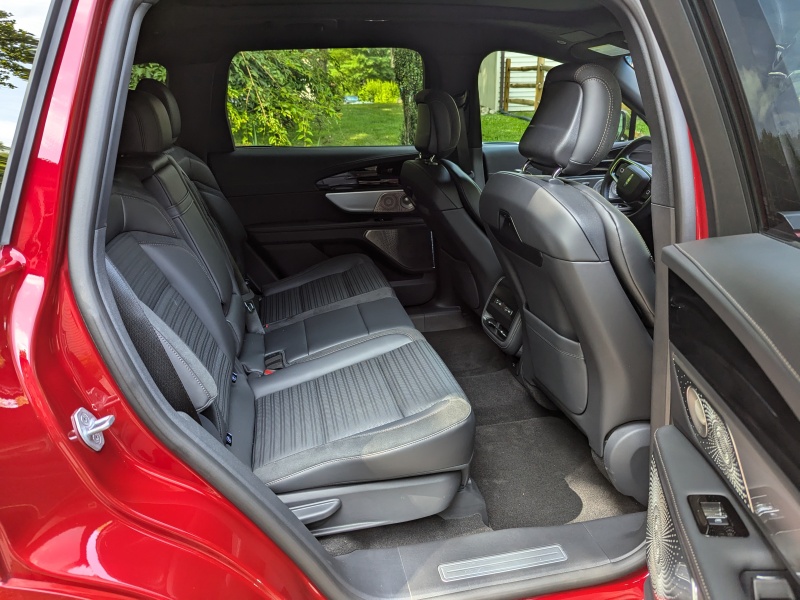
2024 Lincoln Nautilus Reserve III ・ Photo by Brady Holt
Plenty of Cargo Room, Too
The Nautilus grew larger in its redesign, but a focus on passenger comfort cut slightly into its cargo capacity. Still, this Lincoln has a lot more room for your stuff than rivals like the Lexus RX and Cadillac XT5.
By the numbers, the Nautilus has 35.2 cubic feet behind the rear seat and 68.8 cubic feet with the rear seat folded on most trim levels. The base Premiere, without a panoramic sunroof lowering the roof slightly, manages an extra cubic foot or two. That’s only about as much space as you’ll find in a smaller mainstream-brand crossover like the Ford Escape, but that’s typical among luxury models. We don’t think many people will be pinched. (We got another type of pinch when we inadvertently closed the gesture-based hands-free power liftgate while loading groceries.) If you need to haul more than you can fit inside the cabin, though, the Nautilus comes up short for a mid-size crossover. Its towing capacity of just 1,750 pounds is less than even Lincoln’s smaller Corsair (3,000 pounds), much less an XT5 or RX (3,500 pounds), Genesis GV80 (6,000 pounds), or BMW X5 (7,200 pounds).

2024 Lincoln Nautilus Reserve III ・ Photo by Brady Holt
Two Peppy Yet Economical Powertrains
The Nautilus is available with a choice of two powertrains. The base 2.0-liter turbocharged four-cylinder gas engine – making 250 horsepower and 280 lb-ft of torque – carries over from last year’s Nautilus. It’s quick enough to keep the Nautilus credible as a pricy luxury SUV, and its sounds are kept out of the cabin, but it won’t thrill you with its speed.
Our test vehicle has the new hybrid powertrain, which is both quicker and more economical. Thanks to its electric motors plus a more powerful gas engine, the Nautilus Hybrid improves to 300 hp and 295 lb-ft of torque. It’s still not chasing a six-cylinder BMW X5 in a drag race, but we found it effortlessly smooth, and we appreciated that the engine switched off seamlessly in certain conditions. The gas engine was off in more than a third of the total miles we covered during the test, and unlike most luxury hybrids, it doesn’t require any plugging – the gas engine and friction from the brakes charge up the hybrid battery as you drive.
The Nautilus Hybrid gets an EPA-estimated 30 mpg in the city, 31 mpg on the highway, and 30 mpg combined; we averagd 31 mpg combined during our test. Even the gas-only engine gets a respectable 21 mpg city, 29 mpg highway, and 24 mpg combined. And both Nautiluses take low-cost regular-grade fuel, though Lincoln recommends premium in hot weather and while towing.
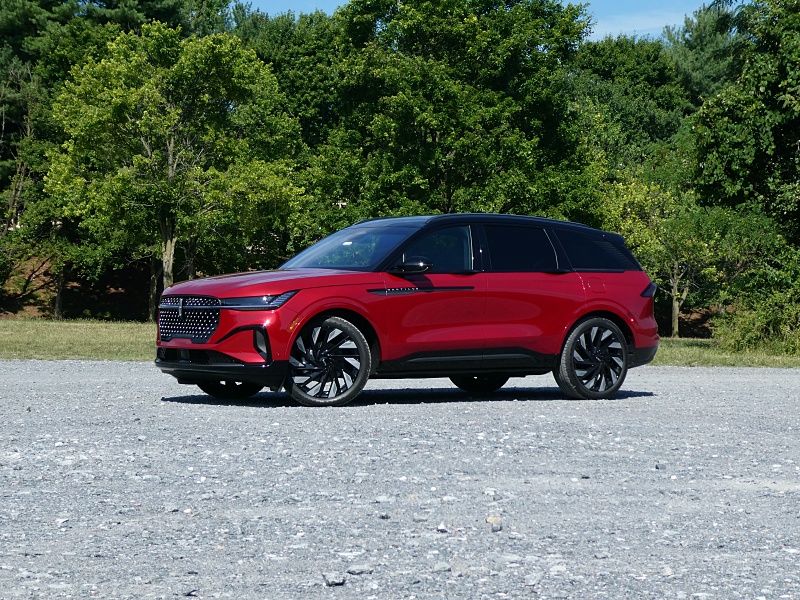
2024 Lincoln Nautilus Reserve III ・ Photo by Brady Holt
Serene Ride and Handling
We mentioned that the Nautilus is focused on a smooth, quiet ride over high-performance handling. And Lincoln achieves that. The new Nautilus is now, mechanically speaking, an enlarged version of the compact Lincoln Corsair. But extra acoustical work keeps out sounds effectively. At one point, we stepped out of the idling Nautilus to take photos to find that the radiator’s fan was running noisily – it was inaudible from inside the cabin.
More impressively, the ride is smooth and comfortable as well, even on our test car’s oversized 22-inch wheels. Some competitors like the Genesis GV80 boast more sophisticated suspension systems, yet they don’t achieve such success. And while the Nautilus isn’t an eager performance vehicle, we even liked driving it on a winding road. The steering glides smoothly, and while it doesn’t encourage you to pick up your pace, it feels like the car is working sublimely just as it was designed to. It was fun to turn the rectangular steering wheel and let the Nautilus calmly obey. A selectable Sport mode firms up both the steering and the available adaptive suspension.
Meanwhile, the Nautilus now comes standard with Ford’s BlueCruise hands-free driving system. It autonomously accelerates, steers, and brakes on 130,000 miles of pre-mapped highways. And Ford’s lawyers are comfortable telling drivers they can take their hands off the steering wheel as long as they’re ready to seize control again if needed. In our test, the system worked smoothly, and it can even automatically change lanes when you press the turn signal. However, Lincoln charges a subscription fee (typically $75 per month) to use BlueCruise; different Nautilus trims include either a free four-year subscription or a 90-day trial.
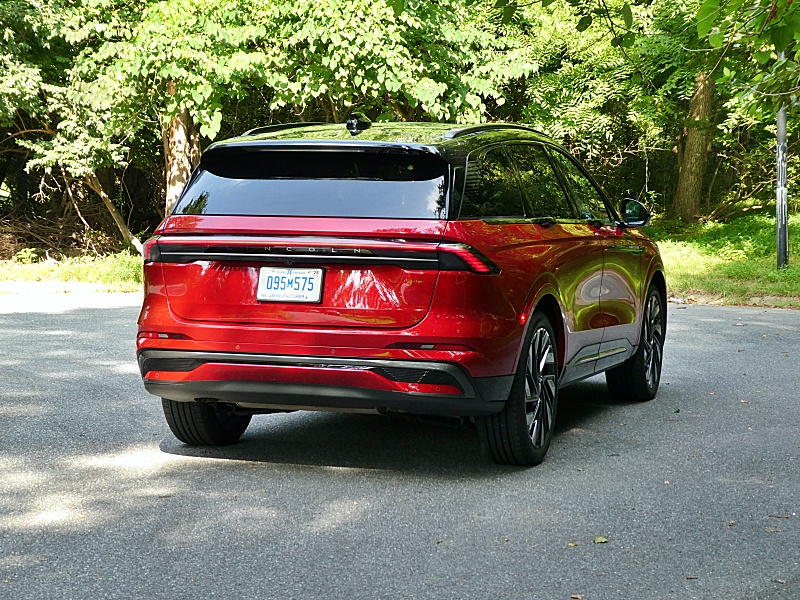
2024 Lincoln Nautilus Reserve III ・ Photo by Brady Holt
More Expensive This Year
One of our favorite things about last year’s Lincoln Nautilus was that it was a great deal for a spacious, high-quality luxury SUV. Prices started at $44,825. Now, that has jumped to $50,415.
Lincoln justifies the expense with more standard equipment. In addition to BlueCruise, the base Nautilus Premiere I now includes the 48-inch touchscreen, all-wheel drive, GPS navigation, heated and ventilated front seats, a memory system for the power seats, and a surround-view parking camera. That keeps the base Nautilus compelling for someone who wanted all those extras, but Lincoln no longer gives you the chance to save money by skipping them.
Even with all that loot standard, it’s easy to swell the Nautilus’s price by continuing to add spiffy options. Check all the boxes – including a 28-speaker Revel 3D stereo, the massaging Perfect Position seats, a “Digital Scent” fragrance diffuser, and Lincoln’s Black Label ownership perks – and you’re looking at an $80,000 SUV. We’d stick with the base Premier I and “settle” for a 10-speaker sound system and leatherette upholstery. (We’d spend the extra $1,500 for the hybrid powertrain, though.) You can also pay $5,775 more for a Premier II with a 14-speaker Revel stereo, a panoramic sunroof, heated rear seats, and the hands-free activator for the power liftgate. Or you could pay $4,335 for the Reserve I trim level for genuine leather, 21-inch wheels, and an adaptive suspension, then another $5,775 for the Reserve II to get the other upgrades we mentioned. You can see how prices can take off, but Lincoln gives you a few ways to pick and choose what you want to spend on.
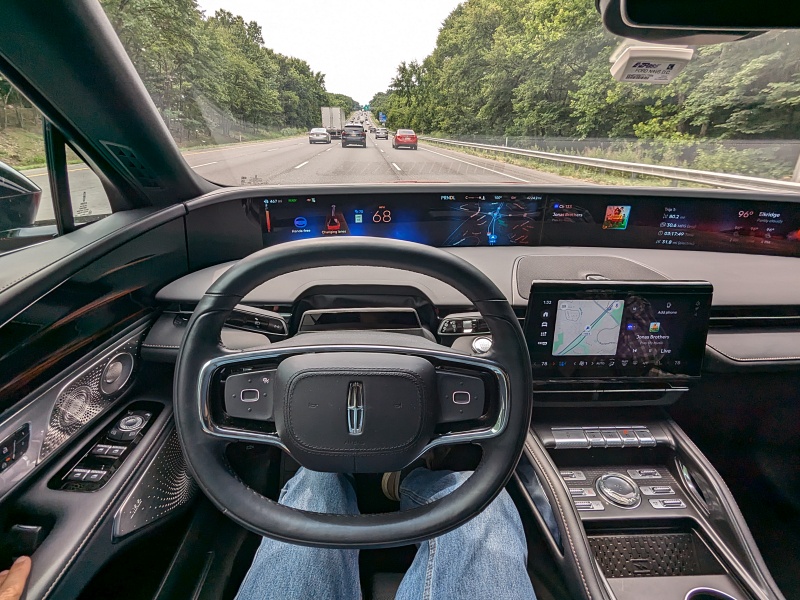
2024 Lincoln Nautilus Reserve III ・ Photo by Brady Holt
Nautilus vs. the Competition
Even with its higher prices, the Nautilus stacks up well against other mid-size luxury SUVs. For only a little more money than its best-selling rival, the Lexus RX, the Nautilus is packed with more features; has more passenger and cargo room; drives better; and has a more advanced interior. The Lexus’s hybrid version gets better gas mileage (36 mpg in EPA testing), but it’s noisier and less powerful than the Nautilus Hybrid. And because the Lexus requires premium fuel, the 30 mpg Lincoln costs less to run.
Versus its European competitors – the BMW X5, Audi Q7, Mercedes-Benz GLE, and Volvo XC90 – the Nautilus matches or beats their ride quality, noise suppression, and passenger space. Its dashboard looks just as advanced while being easier to use. And the Nautilus Hybrid beats them all for fuel economy, at least unless you pay a lot extra for their plug-in hybrid models (which the Nautilus has no answer to). These models are quicker and, in many cases, more agile than the Nautilus. But they fail to embarrass it as a luxury vehicle despite costing more. Nor does the Genesis GV80. It’s the closest Nautilus competitor to offer a lot more cargo room, and it has a lovely interior and lots of features for the money. But it comes up short for gas mileage and has a less comfortable backseat. Lastly, the Cadillac XT5 – the Nautilus’ aging crosstown rival – falls short of the new Nautilus in just about every way except a big one: It still starts at just $43,895, a compelling price for a luxurious-looking SUV.
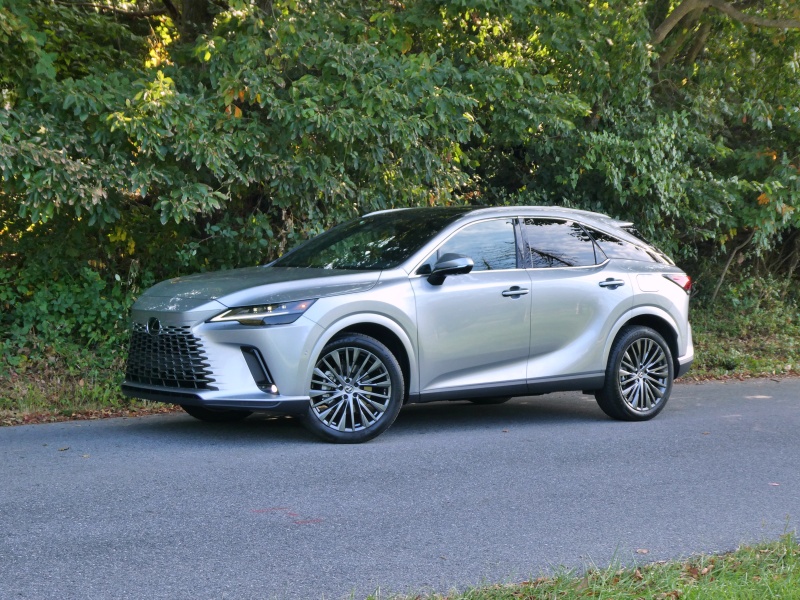
2023 Lexus RX 350h ・ Photo by Brady Holt
Advanced Evolution
The 2024 Lincoln Nautilus makes an impression of a high-tech luxury vehicle. Yet even as it gets more digital dazzle, it remains focused on serene composure and welcoming comfort – and pulls that off better than the competition. We’re also fans of its budget-friendly fuel costs.
The Nautilus isn’t the SUV to get your pulse racing. And last year’s model had even simpler controls. We’ll also note that the new Nautilus is now manufactured in China. We haven’t seen evidence that other Chinese-assembled cars have lesser quality than those built in factories elsewhere, but we know it rubs some folks the wrong way. But overall, even at its higher prices, the redesigned Nautilus remains at the top of its class for someone prioritizing comfort and quietness over speed.
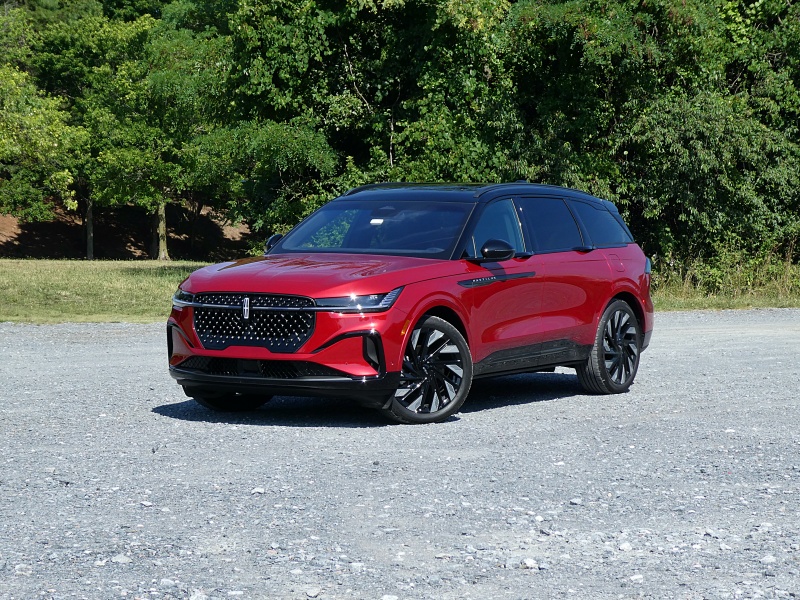
2024 Lincoln Nautilus Reserve III ・ Photo by Brady Holt